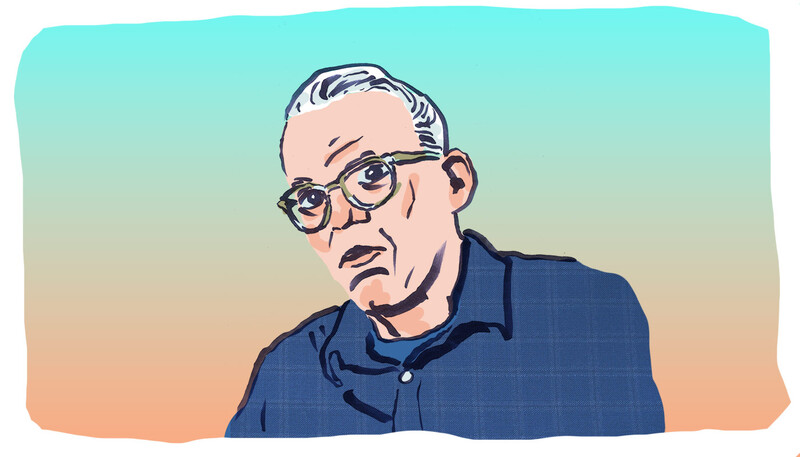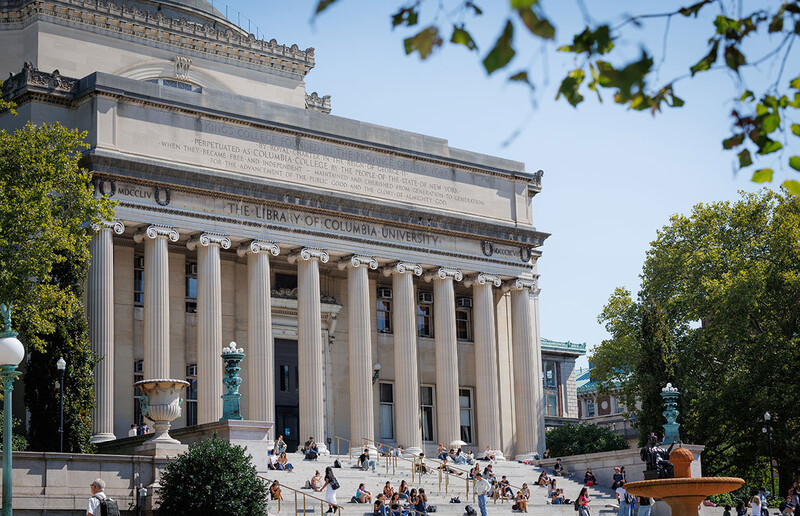Six weeks before the 2010 World Cup in South Africa, Sunil Gulati ’86GSAS, a dashing, silver-haired blade of a man in a dark blue suit and tie, stood before his class and talked about Pareto efficiency.
“The allocation or distribution of goods or resources is considered Pareto efficient if what’s true?” he said, and answered: “That it’s impossible to make anyone in the room better-off without harming at least one other person.” Thus, taking a dollar from Bill Gates and giving it to a poor person would not be a Pareto improvement, since Gates would be out a buck. (“We’re not talking about fairness and justice yet,” Gulati advised.) But if Donald Trump is in the desert and pays someone $1000 for a bottle of water, the Pareto standard is met, since both parties benefit. “Mutual gains from trade: This is an example of a Pareto improvement,” Gulati said. “It’s the invisible-hand story: We don’t seek to make other people better-off, but it ends up happening if markets work well. Strange thing to say in a week when Goldman Sachs is testifying before Congress.” Gulati concluded by observing that, despite the grilling on Capitol Hill, “the facts show that there’s generally something good about competitive markets.” He repeated this for emphasis.
Then he shifted gears. “Put away your notebooks,” he said. “What we’re about to discuss won’t appear on the exam.”
There was a loud rustle as the more than 200 students who packed the lecture hall in Schermerhorn each Tuesday and Thursday morning for Principles of Economics shut their laptops and shifted in their cramped seats. On this, the last day of regular classes, after a rigorous semester of supply and demand, of inflation and stagflation, of slopes and curves and production-possibility frontiers, of Glass-Steagall and collateralized debt obligations, Gulati’s order brought palpable release.
As the shuffling died down, Gulati raised his voice. “The United States has an enormous budget deficit and an enormous trade deficit,” he said. “My question is this: ‘Is the United States a generous donor in terms of international aid?’”
Hands levitated. Gulati pointed to a woman in a middle row. “Yup?”
“In relation to —”
“You’re whispering.”
“In relation to GDP —”
“You’re still whispering.”
The student piped up. “In relation to GDP, the United States is at the lower end.”
Gulati booted it back: “A proportion of our economic activity — is that your measure of whether we’re a generous donor?” It was more statement than question. Gulati selected more hands, with prods of “Louder!” and “Can’t hear you!” that were like a coach’s kick in the pants. One student criticized the U.S. for attaching conditions to aid. Another felt that politicians needed to justify foreign aid at a time when many Americans were hurting. One young man said, “We’re absolutely not generous, particularly when a large percentage of our activity that is not donations has negative effects on the rest of the world. Capitalism,” he went on, his voice rising, “isn’t a walk in the park.” Gulati let the comment hang there, and the class, much of it in shorts and Columbia sweatshirts, erupted in laughter that betrayed the anxieties of the political moment.
Gulati brought out some facts. The United States was, in dollar terms, “by far, the most generous donor in the world,” but its slice of GDP allocated for international humanitarian assistance — less than .2 percent — was “extraordinarily small” compared to the .7 percent targeted in the early ’90s and achieved by some wealthy European countries. Then, invoking the moral philosopher John Rawls’s “veil of ignorance,” Gulati posed the following: Not knowing the outcome for yourself or anyone else, would you choose a world in which everyone had a 50/50 chance of being born into extreme wealth (in Scarsdale) or extreme poverty (in Calcutta); or a world in which everyone had a 100 percent chance of being born somewhere in the middle — say, as a lower-middle-class farmer in Argentina? “What rules of the game,” said Gulati, “do you want to have for the world?”
As the students explored the hypotheticals (would a 99 percent estate tax create a disincentive to work?), some wondered how any of this would relate, if at all, to the striking photographs that Gulati had projected on a screen at the outset of the class. Those images, bright with blues, reds, and yellows, showed small children in the streets of what appeared to be a city in Mexico. But now Gulati was talking about a different place.
He was talking about India, where he was born in 1959. His family moved to the U.S. when he was five. During Gulati’s soccer-filled childhood, in Nebraska and then in Connecticut, the family took some trips to India, which Gulati hated, since it meant missing his games. It was only later, while studying economic development at Columbia, that he went to India on his own. He visited relatives in New Delhi, then took a trip to Calcutta — in part, as he told the class, “to be shocked.” He went to Mother Teresa’s hospice and saw the dying and destitute.
The class listened as Gulati, his voice lowered, described scenes of poverty and human suffering in faraway places. Rawls’s veil fluttered in the room, whispering: What if you were born on the streets of Calcutta?
Gulati moved the story ahead a few years. It was 1986, and a journalist friend at NBC called to say that he’d be working at the World Cup, which that year was being held in Mexico. He invited Gulati to join him, promising posh hotels and free tickets to the games. Gulati, soccer nut, was an easy sell. He went to Mexico, and did not forget his camera.
This past February, Gulati was elected to his second term as president of the United States Soccer Federation (USSF), the national governing body for soccer in the U.S. For more than 20 years, he has been driving the growth of the sport in this country. In the late 1980s he helped put together the bid that resulted in the first U.S.-hosted World Cup, in 1994. That event, with its record-setting attendance, led to the birth of Major League Soccer, an enterprise of which Gulati has been a principal architect.
For the USSF, 2010 is a critical year. There’s the tournament in South Africa, of course, where the Stars and Stripes hope to improve on 2002’s quarter-final finish in Japan and Korea. But Gulati’s big goal businesswise is to bring the World Cup stateside in 2018 or 2022 — a potential economic bonanza for which the bullish professor estimates $1 billion in ticket revenues.
In mid-May, Gulati went to the Zurich headquarters of FIFA (the world governing body of football) and delivered the U.S. bid. For the Cup to come to the States, 13 members of the 24-strong committee must be swayed by an exceptional American offer that includes 18 proposed cities, soccer-specific stadiums, 5 million tickets available, a ready infrastructure, and no need of public funds. The committee will announce its decision on December 2.
Meanwhile, Gulati continues to work on expanding the game in America. “We’ve got to make sure we’re reaching out to all pockets of the population,” he said recently in his office in the International Affairs Building. “It’s going to take time, but as the league gets better, and there are more role models, and the returns to being a professional soccer player improve — those are pieces to the puzzle.”
His office contains a treasure of soccer memorabilia, including a large photo of the U.S. team in 1994. Above this, a television is tuned to CNBC. (Idea for Gulati bio title: Kickers and Tickers.) Behind Gulati’s desk hangs a photograph of Martin Luther King Jr. standing beside a portrait of Gandhi, and high on the wall above the bookshelves is a row of photos of children on the streets of Mexico.
“At a sporting event in a poor country,” Gulati told the class, “there are a lot of kids hawking stuff around the stadium.”
The ’86 Cup opened with Mexico versus Bulgaria, and Gulati and his journalist friend had extra tickets for the match in Mexico City. They approached a small boy and handed him a $50 ticket. There was an awkward moment. The boy looked confused, and Gulati couldn’t understand his words. Then the journalist’s driver stepped in.
“The driver says: ‘He wants to know what you expect in return.’” Gulati’s voice dropped just above a whisper. “Wow. He wants to know what you expect in return.”
Gulati, whose wife is from Mexico, then revealed that the pictures he had shown earlier were of the kids outside the stadium.
“Except,” he said, “I interspersed them with pictures of my own kids.”
As the class pondered the meaning of that, Rawls’s veil shook a little more, and Gulati brought things closer to home.
Twenty-five years ago, he was walking near campus late at night when he saw a woman begging.
“The U.S. president at the time,” Gulati said, “made an assumption, essentially, that she was there by choice.” He paused. “I’m pretty darn sure that the nine- or eight- or seven-year-old kid standing next to her at midnight on a Thursday while she was playing an instrument and trying to ask for money was not there by choice.
“So what does all of this mean? Does it mean we should all hold hands and sing ‘We Are the World’? Maybe. Does it mean that you should just skip the job at J. P. Morgan and join the Peace Corps? Maybe. I don’t know. But here’s some of what I think it does mean.”
And then, for the first time in the lecture, Gulati rolled out a sports metaphor.
“One of the ways you evaluate athletes,” he said, “is by their tolerance for pain. Can they play through pain? I don’t think that’s a good measure when we’re talking about nonathletes. I think it’s not your tolerance for pain, but your intolerance for pain — in those around you.”
He left the students with a reminder that the “extraordinary gift” of a Columbia education invested them with strong obligations to the world.
“Intolerance for pain in others,” he said. “That seems like a pretty good lesson.”



